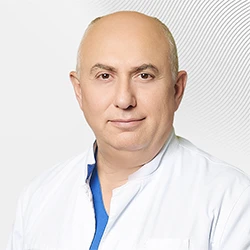Destruction of the vitreous body
In children, immediately after birth, the vitreous body has the consistency of a gel, but with age, the gel begins to gradually liquefy. In this case, individual fibers thicken and lose transparency, while other fibers stick together to form weaves.
Opacities are especially clearly visible against a bright, clean surface, for example, against a background of blue sky, snow, or an illuminated white wall and ceiling, when squinting. In low light, opacities are usually not visible at all. Due to the movement of cloudy particles following the movement of the eye, it can be difficult to focus on a specific object.
Vitreous destruction in the form of "silver" or "golden" rain occurs in the presence of crystalline inclusions of cholesterol, calcium, magnesium and phosphorus salts in elderly patients with impaired cholesterol metabolism and concomitant diabetes mellitus. These crystals have different sizes, shapes (in the form of dots, balls, plates) and colors (snow-white, golden, brown).
It should be remembered about temporary optical effects, such as the "negative imprint" that remains when looking at the sun or another bright light source, or the "sparks" that occur when lifting weights or a sudden change in blood pressure. The above phenomena pass quickly enough, unlike the "flies" caused by the destruction of the vitreous body.
Vitreous body destruction is caused by a number of reasons. The most common of these are age-related changes in the vitreous body, starting at the age of 40-60 years. Other causes that can lead to destruction include various vascular disorders (including hypertension, vascular dystrophic changes), intense endocrine and metabolic changes (puberty, pregnancy, diabetes mellitus), isolated eye and nose injuries, physical exhaustion, dystrophy, frequent and prolonged visual stress, prolonged physical and psychoemotional stresses, the consequences of previous infections.
The sudden appearance of "flies" may be a harbinger of retinal detachment or posterior detachment of the vitreous membrane. In addition to the "flies", patients experience flashes of light due to voids formed in the vitreous body.
Treatment of vitreous destruction is a complex task that can only be handled by an experienced ophthalmologist-surgeon specializing in the treatment of diseases of the posterior segment of the eyeball.
In The EMC Ophthalmological Clinic provides comprehensive effective treatment for vitreous destruction. Surgical procedures include YAG laser vitreolysis (splitting of visible opacities with a laser), surgery performed with a YAG laser from NIDEK (Japan), and vitrectomy (partial or complete removal of the vitreous body, followed by its replacement with gas, silicone, or saline solution). It should be noted that vitrectomy itself is one of the most difficult operations in ophthalmology, a kind of "aerobatics", and its execution is an art. Vitreoretinal surgeons at the EMC Ophthalmology Clinic have the necessary experience and qualifications to perform such complex operations.
Why the EMC
The first and only clinic in Russia, created in the image of the world's leading clinics
EMC is a multidisciplinary center offering patients a high level of medical services and a personalized approach
Worldwide recognition and awards
 Learn more
Learn more
Worldwide recognition and awards
 Certificates and licenses
Certificates and licenses
Make an appointment for a consultation
Specify your contacts and we will contact you to clarify the details
Reviews
and new products of the EMC





.webp)




.webp)
